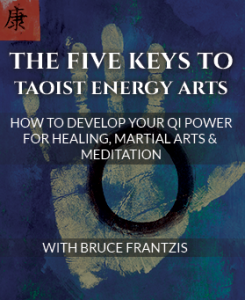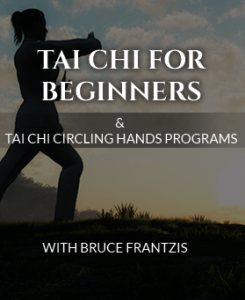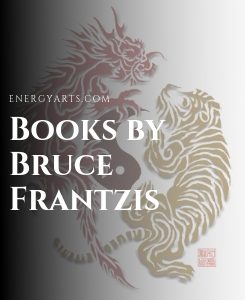I can speak from my experience about what the traditional approach is and the eclectic way I went about it, and the essential difference between an eclectic traditional approach and the approach of the dabbler, who just knows a bit of this and a bit of that.
The first issue is: why become eclectic? In some sense you become eclectic so that you can gain a really specific perspective on something.
You may want to do tai chi, but as an eclectic, you may want to do a tai chi specifically for fighting. For example, I did Praying Mantis and 8 Drunken Immortals. Doing these showed me some martial aspects of tai chi I needed to pay attention to rather than ignore. But I went deeply into them. I didn’t just skim the surface with them.
Digging Your Well
There is a very old phrase from India about the desert: if you want to strike water don’t dig 20 wells ten feet deep, dig one well 200 feet deep. That sums up the approach that I’ve taken.
My principle was that if I was eclectic in several different things, in each one of them I dug a well 200 feet deep.
Many people say, “Well, you know, I’ll do this for a month or two, and I’ll kind of just do that for a workshop.” That approach only helps you get some idea of what each thing is. You still haven’t really done a particular thing until you start to get what its special point is, after several years. So, you really need to go deep to know something and that is generally not the approach of most New Age practitioners.
My experience has been that the traditional ways were all about getting right to the central issue of your practice. By going deep, I don’t mean reading about it. I mean doing your practice until it’s in your blood and in your bones.
Now, in purely intellectual terms, you want to read as widely as possible and apply the methods you would use for any form of research. However, the great trouble with a lot of information is that you may not be able to sort out what is the wheat and what is the chafe, what is relevant and what is minimally tangential.
Grounding the Knowledge in Direct Experience
This is a problem with the masses of information available: often much is not actually grounded in anything substantial.
Another example of this is my experience with Hatha Yoga. Originally, as background for qigong, I did the 300 postures of Hatha Yoga and a lot of Pranayama. But even before that I did the Yoga postures simply to become very flexible so I could kick in martial arts better, do judo better, do ground work and what not better. In one sense, learning the 300 hatha yoga postures can be seen as the traditional approach. From the eclectic view of wanting to know the whole subject of chi, this study was only a piece; it was not the whole thing.
Also, as a Taoist Priest, we went through a great number of subjects. Each one was leading to the other and we went deeper and deeper and deeper. It wasn’t that we just got a little information on each piece. We really went deep and that is the eclectic traditional approach.
Sometimes to understand something in its entirety, you have to come at it from many angles until you can see both what is and what is not so. But again I want to say that the eclectic approach of real traditionalists is not surface knowledge in each of the approaches. It is an incredible in-depth knowledge in each of the approaches, so that even if you work and study ten things, you become a “mini-master” in each of those ten things.
You are not just a beginning or intermediate student, you go down your path picking up whatever possible from wherever available until you really clearly get the essential point of the particular piece you are studying until you get it, unambiguously and with no nonsense.
Different Approaches in China
It was very main stream in all of China for some people to do only one thing for their entire life. Others even if they specialize in one thing, want to know what tangentially or directly connects to and enhances that one thing, or whatever number of things they really are focusing on. This approach can be very difficult.
So, the traditional eclectic approach in China is that in each and every part of your approach, whatever its inclusive different components, you would be virtually at the Master level, not a casual level. The purpose of all this was to become a super master a Grand Master or what in China they simply would call a real Master of the subject.





I dig what you are saying. Then again; starting out seriously getting into Bagua, and applying all the fighting techiques of the Kung Fu styles, right away; sure: A lot of fun, but sort of getting a little to ready for everything.. Something about the 70 % rule U talking about, and noticing when you’r over revd’d.. Perhaps. Maybe now, picking it more up, having healed from my “fun” MC slide, then again , maybe I am to conservative..
hello,
thank you for amazing teachings. Does energy arts plan to release a Taoist yoga book or dvd at any point?